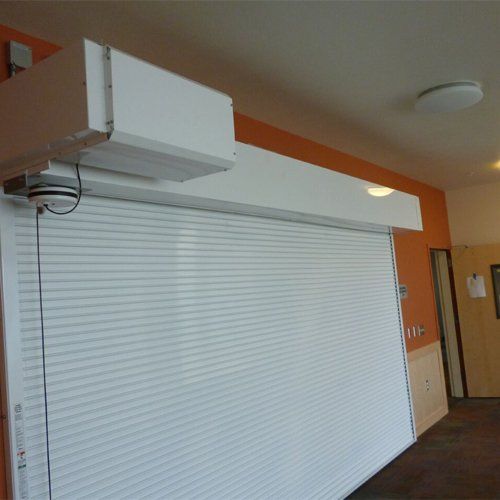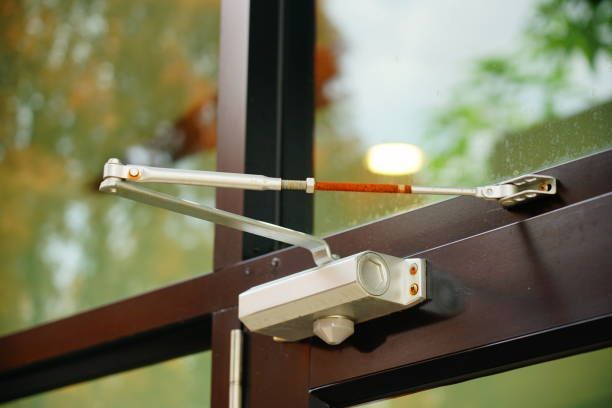Fire Door Inspection & Rolling Steel Door Fire Safety
NFPA 80, also known as the "Standard for Fire Doors and Other Opening Protectives," regulates the maintenance and installation of devices and assemblies designed to protect openings in buildings from the spread of fire smoke. In this guide, we'll explore the key aspects of fire door inspection and rolling steel door fire safety.
NFPA 80 Overview
NFPA 80 serves as a comprehensive guide for Authorities Having Jurisdiction (AHJ), aiding them in the crucial task of ensuring that fire door assemblies conform to the necessary standards and maintenance protocols. Notably, the 2022 edition of NFPA 80 brought about substantial updates, with a particular focus on Chapter 11 (Rolling Steel Doors) and Chapter 13 (Service Counter Fire Doors). These changes have far-reaching implications for fire safety. One of the key alterations is the mandate for periodic inspections, stipulated under NFPA 5.2.4, which now necessitates annual assessments performed exclusively by trained rolling steel fire door systems technicians. These inspections play a vital role in upholding the safety and functionality of fire doors in various structures.
Visual Fire Door Inspections
Before conducting testing, visual inspections are crucial to identify potential hazards and ensure proper door operation.
Key points to inspect include:
- Fusible links (if equipped), ensuring they are free from paint, dust, or grease, and that cables or chains are flexible and not twisted.
- The absence of any field modifications that void the door's label.
- Correct installation of slats, end locks, bottom bars, guide assemblies, and hoods.
- No missing or broken parts, with clearly visible and legible labels.
- Unobstructed drop release mechanisms and weights.
- No unauthorized attachments to the fire door assembly.
- Proper alignment and attachment of curtain, barrel, and guides.
- Secure mounting and assembly bolts, meeting manufacturer's requirements.
Record of Maintenance Requirements
It’s important to note that maintenance records for existing fire door assemblies must include the following information:
- Date of inspection.
- Name and address of the facility.
- Names of the individuals performing the inspection and testing.
- Company name and address of the inspecting company.
- Signature of the inspector of record.
- Individual records for each inspected and tested fire door assembly.
- Identification and location details for each fire door assembly.
- Type and description of each inspected fire door assembly.
- Verification of visual inspection and functional operation.
- A list of any identified deficiencies.
Drop Testing Rolling Steel Doors
During the acceptance testing of rolling steel doors, it is imperative to conduct a drop test not once but twice to verify their reliability. The primary objective is to confirm that the door can close automatically in the event of a fire emergency. This procedure should strictly adhere to the manufacturer's provided drop test instructions.
To begin, the door must be fully open before initiating the drop test, and it should subsequently close entirely so that the bottom bar rests on the sill. To meet the required standards, the closing speed should fall within the range of 6 to 24 inches per second. Moreover, it is essential to assess each automatic closing option available for the fire door to ensure their proper functioning in critical fire safety scenarios.
Resetting the Door
Following the completion of the drop test, the next steps involve resetting the door in accordance with the manufacturer's specified instructions. To ensure the door's operational integrity, proceed to open and close it using standard operational procedures. This is crucial for verifying that the door functions as expected.
As an additional layer of safety validation, conduct a second drop test to confirm that the door will indeed close properly in the event of a fire emergency. Once this secondary test is completed, the door should be reset once again, ensuring that it aligns with the manufacturer's reset guidelines.
These steps collectively contribute to the reliability and effectiveness of the fire door system in critical situations. By following these guidelines and standards, you can help ensure the safety and functionality of fire doors and rolling steel doors in your building.


REQUEST ESTIMATE OR SERVICE CALL
Call the guys that care.
10235 Systems Pkwy, Suite B
Sacramento, CA 95827
Contractor's License: 1118556
All Rights Reserved | Industrial Door Company



